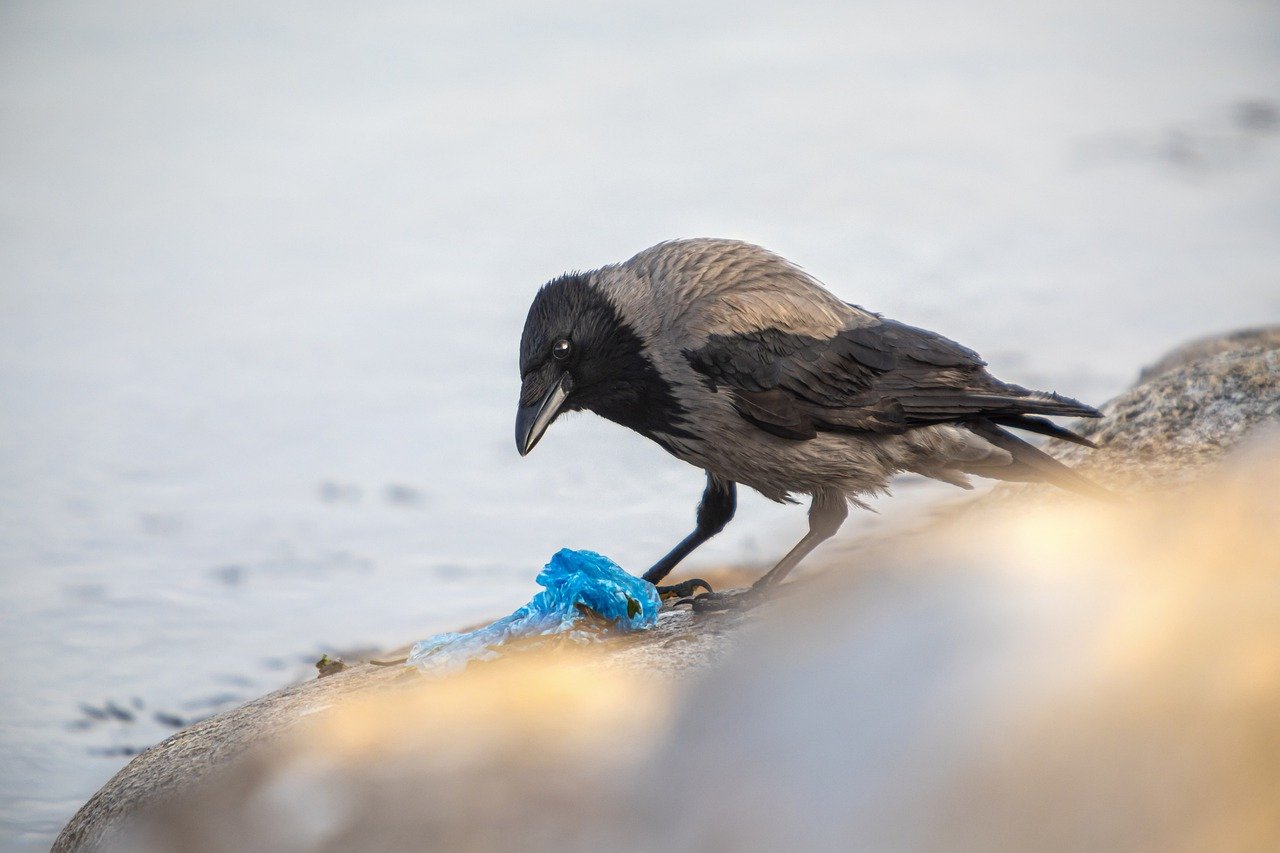Absolutely — here’s a deep, detailed overview of the Hooded Crow (Corvus cornix), one of the most intelligent and adaptable birds of the Northern Hemisphere.
🪶 Hooded Crow (Corvus cornix)
🔹 Taxonomy
- Order: Passeriformes
- Family: Corvidae (Crows, ravens, and magpies)
- Genus: Corvus
- Species: C. cornix
- Common names: Hooded Crow, Grey Crow
- Authority: Linnaeus, 1758
Closely related to the Carrion Crow (Corvus corone), and the two form a hybrid complex where their ranges overlap.
🌍 Distribution & Range
The Hooded Crow occupies much of northern and eastern Europe and western Asia.
Main regions:
- British Isles: Northern Scotland, Ireland, Isle of Man
- Scandinavia: Norway, Sweden, Finland
- Central and Eastern Europe: Poland, the Baltics, Belarus
- Southern Europe: Italy (especially south and Sardinia) and the Balkans
- Middle East: Turkey, Levant, northern Iran
- Western Asia: Caucasus region
- Russia: west of the Yenisei River
🗺️ Hybridization zone
In Central Europe (Germany, Denmark, Poland), C. cornix interbreeds with the all-black C. corone (Carrion Crow), producing fertile hybrids — a textbook example of a “semi-species” pair.
🏞️ Habitat
Highly adaptable and present in a wide range of habitats, including:
- Coastal cliffs and islands
- Farmland and open countryside
- Urban areas and towns
- Parks, cemeteries, and gardens
- Woodland edges and scrublands
- River valleys and wetlands
Avoids dense forests but thrives in mixed mosaic landscapes where open feeding areas alternate with trees or human structures.
🧬 Physical Description
A medium‐large corvid with a striking two-tone plumage.
| Feature | Description |
|---|---|
| Length | 45–50 cm |
| Wingspan | 93–104 cm |
| Weight | 400–600 g |
| Plumage | Contrasting pale grey body with black head, throat, wings, tail, and thighs (“hooded” appearance) |
| Bill | Strong, black, slightly curved |
| Eyes | Dark brown |
| Sexes | Similar (sexually monomorphic) |
| Juveniles | Duller grey, browner head feathers |
Distinctly bicoloured compared to the uniform black Carrion Crow.
🧠 Behavior & Intelligence
One of the most intelligent birds known.
- Demonstrates tool use, problem-solving, and object caching
- Shows individual recognition of humans and conspecifics
- Known to drop nuts or shells on roads for cars to crack them
- Social learning evident — juveniles imitate adults’ feeding strategies
Forms loose social flocks, especially in winter, often roosting communally in large numbers.
🗣️ Calls & Communication
Typical corvid “caw” — harsh and croaky but highly variable in pitch and rhythm.
- Alarm calls are sharp and repeated
- Courtship and pair communication are softer, more modulated
- Can mimic other bird sounds and even human voices (in captivity)
Regional dialects occur within populations.
🍼 Breeding Biology
- Season: March–May (earlier in southern range)
- Nest: Large, bulky structure of sticks, lined with wool, hair, or moss; placed in trees, cliffs, or buildings
- Clutch size: 4–6 eggs (greenish with brown spots)
- Incubation: ~18–20 days (by female)
- Fledging: Young leave nest at 4–5 weeks
Pairs are monogamous, often remaining together for life and defending the same territory year-round.
🍽️ Diet
Omnivorous and opportunistic. The Hooded Crow consumes a vast variety of food types:
- Invertebrates: beetles, worms, snails
- Small vertebrates: rodents, eggs, chicks, carrion
- Grains and seeds
- Fruit and berries
- Human refuse: food scraps, roadkill, landfill waste
Frequently scavenges at rubbish sites or shorelines and may raid nests of seabirds. Plays an important role as a scavenger and cleaner of ecosystems.
🔄 Migration
- Northern populations: partially migratory — move southwards in winter
- Southern populations: largely sedentary
- Migratory movements mainly along coastlines and river valleys
Can form mixed flocks with Carrion Crows or Rooks outside the breeding season.
🌱 Ecological Role
| Function | Description |
|---|---|
| Scavenger | Cleans carcasses and waste, reducing disease risk |
| Seed disperser | Via fruit and grain consumption |
| Predator | Controls small animal and insect populations |
| Ecosystem indicator | Thrives in moderately healthy, open landscapes |
Despite its opportunism, it supports ecological balance through its omnivorous versatility.
⚖️ Conservation Status
- IUCN Red List: 🟢 Least Concern
- Population trend: Stable or slightly increasing
- Estimated population: >20 million individuals globally
Threats
- Persecution in some regions (viewed as pest)
- Habitat degradation in remote areas
- Secondary poisoning from rodenticides
Generally benefited by human-modified landscapes.
🧩 Evolutionary Relationships
Part of the “Corvus corone complex”, which includes:
- Corvus corone (Carrion Crow)
- Corvus cornix (Hooded Crow)
- Corvus orientalis (Eastern Carrion Crow)
- Corvus capellanus (Mesopotamian Crow)
Genetic data show C. corone and C. cornix diverged during the Pleistocene glaciations, likely isolated in separate refugia — with secondary contact leading to today’s hybrid zones.
⚙️ Adaptations
- Strong cognitive flexibility → survives in urban and rural habitats alike
- Omnivorous diet → tolerates seasonal scarcity
- Vocal intelligence → complex communication system
- Pair bonding → stable social structure ensures breeding success
✅ Summary Table
| Feature | Detail |
|---|---|
| Size | 45–50 cm (medium-large corvid) |
| Plumage | Grey body, black head/wings (“hooded”) |
| Diet | Omnivore & scavenger |
| Habitat | Coasts, fields, cities, woodlands |
| Behavior | Highly intelligent, tool use |
| Breeding | Monogamous, 4–6 eggs |
| Conservation | Least Concern, stable |
Views: 1394
Subscribe to the newsletter:
